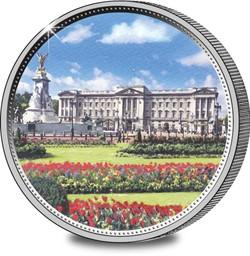-no-button.jpg)
 |
Location: London, England
Date completed: 1703, frequently modified and
rebuilt since
Designers: As we know it today, mainly the
work of John Nash
Function: Royal Palace
|
To Britons, and especially Londoners, Buckingham Palace is much
more than just a royal residence. It is also the focal point for
the city and the nation in times of sadness and celebration. From
its famous balcony the royal family have joined the public in
celebrating victories in war, royal weddings and royal births.
Outside the Palace railings, crowds have gathered to mourn the
passing of monarchs and other much loved royals. It's also a venue
for garden parties and award ceremonies and a setting for banquets
welcoming foreign dignitaries. And of course it's home to the royal
family and many of their staff.
The site of Buckingham Palace has changed hands many times since
the Saxon era, being owned by among others Edward the Confessor,
William the Conqueror, the monks of Westminster Abbey and various
commoners. The building which is the core of the present Palace,
Buckingham House, was built in 1703 for the Duke of Buckingham and
Normandy. George III purchased it in 1761, paying £21,000
(supposedly £2,820,000 in today's money, but in terms of average
wages, probably very much more). It was intended for Queen
Charlotte to use as a comfortable family house and 14 of the
couple's 15 children were born there. In 1762 the first of many
modifications took place. George IV also remodelled the house,
commissioning the architect John Nash to transform the house into a
palace. Nash doubled the size of the main block and demolished and
rebuilt the north and south wings, with the Marble Arch as the
centrepiece of a large courtyard. However, Queen Victoria was the
first monarch to use the Palace as a royal residence and again made
major changes, including in 1847 moving the Marble Arch to Hyde
Park and building a fourth wing. The Palace forecourt, where the
Changing of the Guard takes place, was constructed in 1911,
together with the gates and railings. Today the Palace has 775
rooms, including 188 staff bedrooms, 52 royal and guest bedrooms,
92 offices and 78 bathrooms. While it contains fabulous antiques
and artworks, it is not a museum, but a family home and royal
administrative hub.